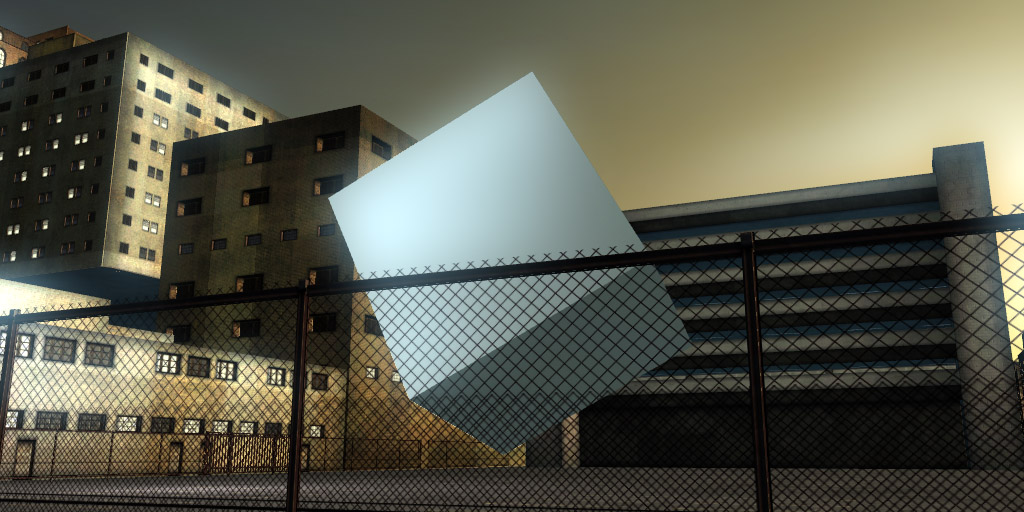|
Isadora (software)
Isadora is a proprietary graphic programming environment for Mac OS X and Microsoft Windows, with emphasis on real-time manipulation of digital video. It was first released in 2000. It has support for Open Sound Control and MIDI. Isadora was designed by Mark Coniglio Mark Coniglio (born 1961 in Omaha, Nebraska) is a media artist, composer, and programmer. He is recognized as a pioneer in the integration of live performance and interactive digital technology. With choreographer Dawn Stoppiello he is co-founder .... References External links Isadora homepageIsadora review on VJCentral {{multimedia-software-stub Video editing software Stagecraft software Sound production Sound production technology Digital art Interactive media Interactive art Companies based in Berlin ... [...More Info...] [...Related Items...] OR: [Wikipedia] [Google] [Baidu] |
Proprietary Software
Proprietary software is computer software, software that grants its creator, publisher, or other rightsholder or rightsholder partner a legal monopoly by modern copyright and intellectual property law to exclude the recipient from freely sharing the software or modifying it, and—in some cases, as is the case with some patent-encumbered and EULA-bound software—from making use of the software on their own, thereby restricting their freedoms. Proprietary software is a subset of non-free software, a term defined in contrast to free and open-source software; non-commercial licenses such as CC BY-NC are not deemed proprietary, but are non-free. Proprietary software may either be closed-source software or source-available software. Types Origin Until the late 1960s, computers—especially large and expensive mainframe computers, machines in specially air-conditioned computer rooms—were usually leased to customers rather than Sales, sold. Service and all software available ... [...More Info...] [...Related Items...] OR: [Wikipedia] [Google] [Baidu] |
Mac OS X
macOS, previously OS X and originally Mac OS X, is a Unix, Unix-based operating system developed and marketed by Apple Inc., Apple since 2001. It is the current operating system for Apple's Mac (computer), Mac computers. Within the market of Desktop computer, desktop and laptop computers, it is the Usage share of operating systems#Desktop and laptop computers, second most widely used desktop OS, after Microsoft Windows and ahead of all Linux distributions, including ChromeOS and SteamOS. , the most recent release of macOS is MacOS Sequoia, macOS 15 Sequoia, the 21st major version of macOS. Mac OS X succeeded classic Mac OS, the primary Mac operating systems, Macintosh operating system from 1984 to 2001. Its underlying architecture came from NeXT's NeXTSTEP, as a result of NeXT#1997–2006: Acquisition by Apple, Apple's acquisition of NeXT, which also brought Steve Jobs back to Apple. The first desktop version, Mac OS X 10.0, was released on March 24, 2001. Mac ... [...More Info...] [...Related Items...] OR: [Wikipedia] [Google] [Baidu] |
Microsoft Windows
Windows is a Product lining, product line of Proprietary software, proprietary graphical user interface, graphical operating systems developed and marketed by Microsoft. It is grouped into families and subfamilies that cater to particular sectors of the computing industry – Windows (unqualified) for a consumer or corporate workstation, Windows Server for a Server (computing), server and Windows IoT for an embedded system. Windows is sold as either a consumer retail product or licensed to Original equipment manufacturer, third-party hardware manufacturers who sell products Software bundles, bundled with Windows. The first version of Windows, Windows 1.0, was released on November 20, 1985, as a graphical operating system shell for MS-DOS in response to the growing interest in graphical user interfaces (GUIs). The name "Windows" is a reference to the windowing system in GUIs. The 1990 release of Windows 3.0 catapulted its market success and led to various other product families ... [...More Info...] [...Related Items...] OR: [Wikipedia] [Google] [Baidu] |
Open Sound Control
Open Sound Control (OSC) is a protocol for networking sound synthesizers, computers, and other multimedia devices for purposes such as musical performance or show control. OSC's advantages include interoperability, accuracy, flexibility and enhanced organization and documentation. Its disadvantages include inefficient coding of information, increased load on embedded processors, and lack of standardized messages/interoperability. The first specification was released in March 2002. Motivation OSC is a content format developed at CNMAT by Adrian Freed and Matt Wright comparable to XML, WDDX, or JSON. It was originally intended for sharing music performance data (gestures, parameters and note sequences) between musical instruments (especially electronic musical instruments such as synthesizers), computers, and other multimedia devices. OSC is sometimes used as an alternative to the 1983 MIDI standard, when higher resolution and a richer parameter space is desired. OSC messa ... [...More Info...] [...Related Items...] OR: [Wikipedia] [Google] [Baidu] |
MIDI
Musical Instrument Digital Interface (; MIDI) is an American-Japanese technical standard that describes a communication protocol, digital interface, and electrical connectors that connect a wide variety of electronic musical instruments, computers, and related audio devices for playing, editing, and recording music. A single MIDI cable can carry up to sixteen channels of MIDI data, each of which can be routed to a separate device. Each interaction with a key, button, knob or slider is converted into a MIDI event, which specifies musical instructions, such as a note's pitch, timing and velocity. One common MIDI application is to play a MIDI keyboard or other controller and use it to trigger a digital sound module (which contains synthesized musical sounds) to generate sounds, which the audience hears produced by a keyboard amplifier. MIDI data can be transferred via MIDI or USB cable, or recorded to a sequencer or digital audio workstation to be edited or played back. ... [...More Info...] [...Related Items...] OR: [Wikipedia] [Google] [Baidu] |
Mark Coniglio
Mark Coniglio (born 1961 in Omaha, Nebraska) is a media artist, composer, and programmer. He is recognized as a pioneer in the integration of live performance and interactive digital technology. With choreographer Dawn Stoppiello he is co-founder of Troika Ranch, a New York City based performance group that integrates music, dance, theater and interactive digital media in its performance works. He is also the creator of Isadora, a flexible media manipulation tool that provides interactive control over digital video and sound. Career A native of Nebraska, his career began with a five-year tenure as a producer for American Gramaphone Records, during which time he received a performance of his work by the London Symphony Orchestra. He studied at the California Institute of the Arts with electronic music pioneer Morton Subotnick and received his degree in music composition in 1989. He taught courses in Interactive Music and was on the staff of the Center for Experiments in Art, Infor ... [...More Info...] [...Related Items...] OR: [Wikipedia] [Google] [Baidu] |
Video Editing Software
Video editing software or a video editor is software used for performing the post-production video editing of digital video sequences on a non-linear editing system (NLE). It has replaced traditional flatbed celluloid film editing tools and analog video tape editing machines. Video editing software serves a lot of purposes, such as filmmaking, audio commentary, and general editing of video content. In NLE software, the user manipulates sections of video, images, and audio on a sequence. These clips can be trimmed, cut, and manipulated in many different ways. When editing is finished, the user exports the sequence as a video file. Components Timeline NLE software is typically based on a timeline interface where sections moving image video recordings, known as clips, are laid out in sequence and played back. The NLE offers a range of tools for trimming, splicing, cutting, and arranging clips across the timeline. Another kind of clip is a text clip, used to add text to a video ... [...More Info...] [...Related Items...] OR: [Wikipedia] [Google] [Baidu] |
Stagecraft Software
Stagecraft is a technical aspect of theatrical, film, and video production. It includes constructing and rigging scenery; hanging and focusing of lighting; design and procurement of costumes; make-up; stage management; audio engineering; and procurement of props. Stagecraft is distinct from the wider umbrella term of scenography. Considered a technical rather than an artistic field, it is primarily the practical implementation of a scenic designer's artistic vision. In its most basic form, stagecraft may be executed by a single person (often the stage manager of a smaller production) who arranges all scenery, costumes, lighting, and sound, and organizes the cast. Regional theaters and larger community theaters will generally have a technical director and a complement of designers, each of whom has a direct hand in their respective designs. Within significantly larger productions, for example a modern Broadway show, effectively bringing a show to opening night requires the wo ... [...More Info...] [...Related Items...] OR: [Wikipedia] [Google] [Baidu] |
Sound Production
{{disambig ...
Sound production may refer to: *Audio engineering *Creation of sound through speech, using a musical instrument, etc. *Record production *Sound design Sound design is the art and practice of creating auditory elements of media. It involves specifying, acquiring and creating audio using production techniques and equipment or software. It is employed in a variety of disciplines including filmmaking ... [...More Info...] [...Related Items...] OR: [Wikipedia] [Google] [Baidu] |
Sound Production Technology
In physics, sound is a vibration that propagates as an acoustic wave through a transmission medium such as a gas, liquid or solid. In human physiology and psychology, sound is the ''reception'' of such waves and their ''perception'' by the brain. Only acoustic waves that have frequencies lying between about 20 Hz and 20 kHz, the audio frequency range, elicit an auditory percept in humans. In air at atmospheric pressure, these represent sound waves with wavelengths of to . Sound waves above 20 kHz are known as ultrasound and are not audible to humans. Sound waves below 20 Hz are known as infrasound. Different animal species have varying hearing ranges, allowing some to even hear ultrasounds. Definition Sound is defined as "(a) Oscillation in pressure, stress, particle displacement, particle velocity, etc., propagated in a medium with internal forces (e.g., elastic or viscous), or the superposition of such propagated oscillation. (b) Auditory s ... [...More Info...] [...Related Items...] OR: [Wikipedia] [Google] [Baidu] |
Digital Art
Digital art, or the digital arts, is artistic work that uses Digital electronics, digital technology as part of the creative or presentational process. It can also refer to computational art that uses and engages with digital media. Since the 1960s, various names have been used to describe digital art, including computer art, electronic art, multimedia art, and new media art. Digital art includes pieces stored on physical media, such as with digital painting, and galleries on websites. This extenuates to the field known as Visual computing, Visual Computation. History In the early 1960s, John Whitney (animator), John Whitney developed the first computer-generated art using mathematical operations. In 1963, Ivan Sutherland invented the first user interactive computer-graphics interface known as Sketchpad. Between 1974 and 1977, Salvador Dalí created two big canvases of ''Gala Contemplating the Mediterranean Sea which at a distance of 20 meters is transformed into the portrait of ... [...More Info...] [...Related Items...] OR: [Wikipedia] [Google] [Baidu] |
Interactive Media
Interactive media refers to digital experiences that dynamically respond to user input, delivering content such as Text (literary theory), text, images, animations, video, Sound, audio, and even Artificial intelligence, AI-driven interactions. Over the years, interactive media has expanded across Video game, gaming, education, social platforms, and immersive technologies like Virtual reality, VR and Augmented reality, AR. With the rise of AI-generated content, decision-driven narratives, and real-time engagement, concerns have shifted toward cybersecurity risks, digital well-being, and the societal impact of Personalized, hyper-personalized media. Definition Interactivity, Interactive media is a method of communication in which the output from the media comes from the input of the users. Interactive media works with the user's participation. The media still has the same purpose but the user's input adds interaction and brings interesting Software feature, features to the system f ... [...More Info...] [...Related Items...] OR: [Wikipedia] [Google] [Baidu] |





